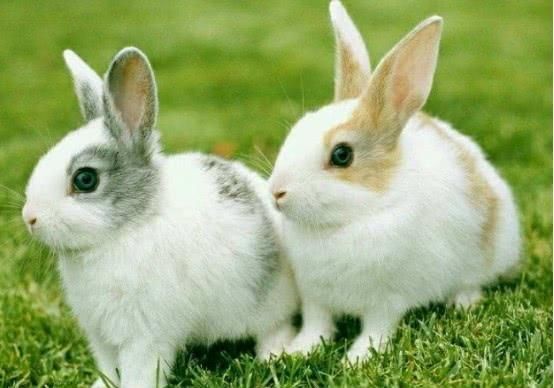
News briefing:

News briefing:
What do you know about rabbits? Before we raise rabbits, we first need to figure out what are the habits of rabbits? How to feed rabbits? Next, I will answer these two questions for all of you.
What are the life habits of rabbits?
(1) Quiet during the day and good food at night
In the process of long-term survival competition, the rabbit gradually develops the habit of being good at drilling holes and coming out at night. Rabbits lie quietly in a cage during the day, are very active at night, and eat a lot. According to observations, the night intake accounts for more than 70% of the whole day. Under certain conditions, meat rabbits can easily enter a state of sleepiness or sleep, at which time the feeling decreases or even disappears. Therefore, it is necessary to feed enough weeds and fodder at night, and try not to hinder its sleep during the day. For example, if the rabbit is lying on its side or facing upwards in a "U"-shaped posture, and then gently stroked with the hand, or touched the temple, the rabbit will enter a sleep state within 2 minutes.
(2) timid and afraid of shock
A rabbit is a timid animal. Sudden noises, strangers and strange animals such as cats and dogs make it panic. Rabbits have a keen sense of hearing and often poke their ears to listen to the sound. The intrusion of noise, strangers, or strange animals will startle the rabbits, causing them to run around in the cage, and they will stamp their feet at the same time. This stomping sound will cause other rabbits to panic, so that the whole group is frightened. In the breeding and management, the noise that causes the rabbits to panic should be avoided as much as possible, and the breeder's actions should be light, and the noise should be avoided as much as possible. At the same time, strangers should be prohibited from visiting and cats and dogs entering the rabbit house.
(3) hate heat and humidity, prefer dry environment
The sweat glands of rabbits are underdeveloped and they mainly rely on breathing to dissipate heat. Therefore, long-term exposure to high temperature (above 35°C) in a humid environment will cause a large number of deaths. Experiments have proved that the ideal environment temperature for adult rabbits is 14-20℃, and the temperature in the nest of newborn rabbits is 30-32℃. Drying and cleaning are very beneficial to the health of rabbits. Rabbits are also very hygienic. They often use their front paws to "wash their face", eating, pooping, peeing, and salivation. When the rabbit's anus, mouth, and nose are not clean, it means that there is a disease, and the cause should be found out as soon as possible, and the symptoms should be treated.
(4) Not in a group, so living alone
Rabbits live alone in their own burrows under natural conditions, and only stay together during the mating season. Both male and female rabbits and rabbits of the same sex often fight together, causing trauma, such as biting off the ears or testicles. Therefore, rabbits should be reared in a single cage.
(5) It’s good to eat
The big front teeth of rabbits are permanent teeth and grow frequently. If soft materials are often fed, rabbits will naturally bite wooden cages and other objects to maintain proper tooth length. Therefore, some branches or pellets should be put into the rabbit cage. When making the rabbit cage, try not to leave any edges or corners, so that the rabbits cannot bite, so as to extend the life of the rabbit cage.
How to feed rabbits?
1. No animal can do without water, the same goes for rabbits. The water for rabbits must be clean boiled water.
2. The intestines of rabbits are relatively weak. It should be mainly fed with rabbit food + fresh alfalfa + purified water. Occasionally, celery, coriander, dandelion, etc. can be fed. These plants are very helpful to the rabbit's body.
3. The living environment of rabbits should be hygienic, dry and ventilated. Rabbits in cages should be kept active for more than 1 hour a day. You can teach the rabbit to go to the toilet if you are afraid of pulling it randomly. Its urine and feces must be cleaned every day. If it is not cleaned, nitrogen will be generated if it accumulates for a long time.
4. When catching a rabbit, never catch the rabbit’s ears. Ears are an important organ of rabbits. The correct way to catch a rabbit should be: hold Tutu’s back with one hand, and lift Tutu’s buttocks with the other hand, so that Tutu’s legs and belly are facing forward.
5. Pay special attention to checking the physical condition of the rabbit, because some symptoms are signs of disease. The feces of healthy rabbits are black and round, odorless, and can digest food. They have good spirits, good appetite, and clear eyes. The ears are clean, there is no skin disease on the body, the reaction is quick, no drooling, no deformed teeth, etc.
Before breeding rabbits, what are the living habits of rabbits? How to feed rabbits? Scientific breeding will do more with less.
Date of opening:1970-01-01 Shop address: Main products: Store certification time:1970-01-01 08:00:00
Store Name: Principal: Contact number: email: